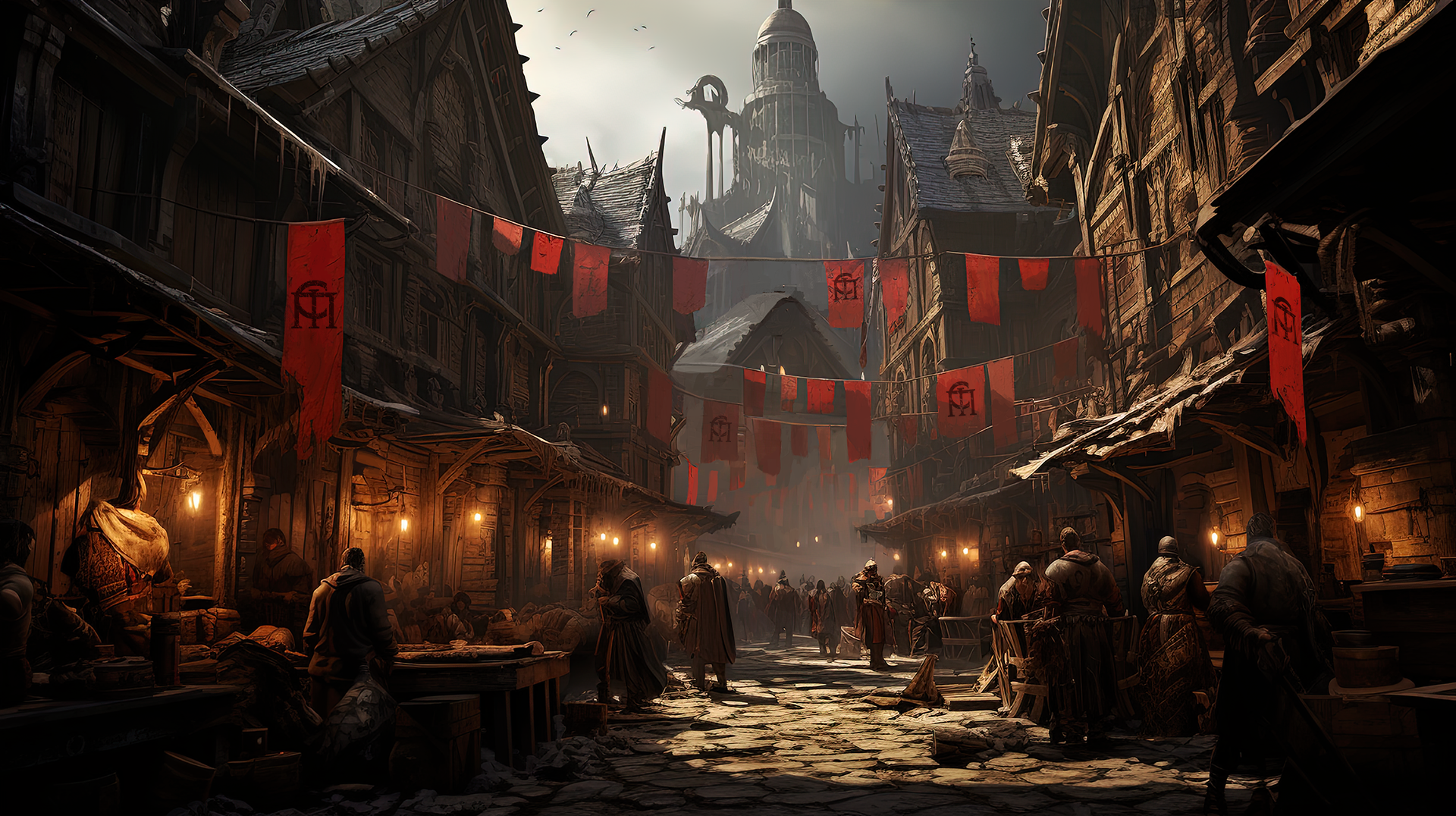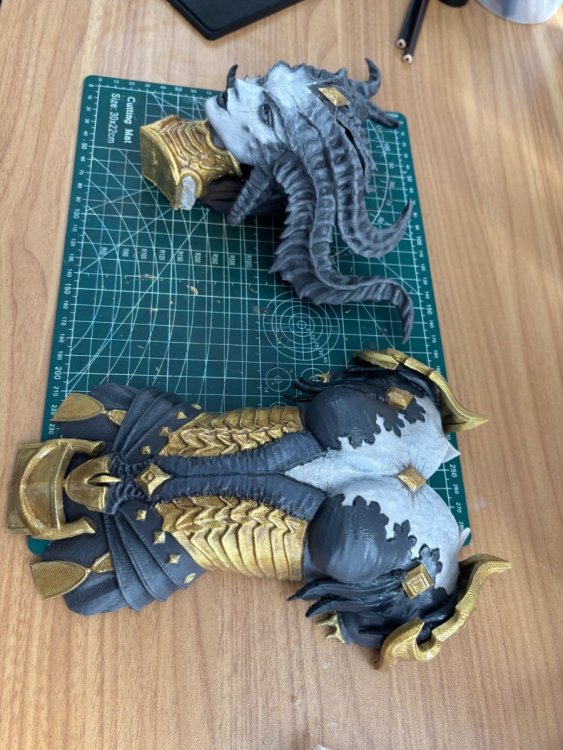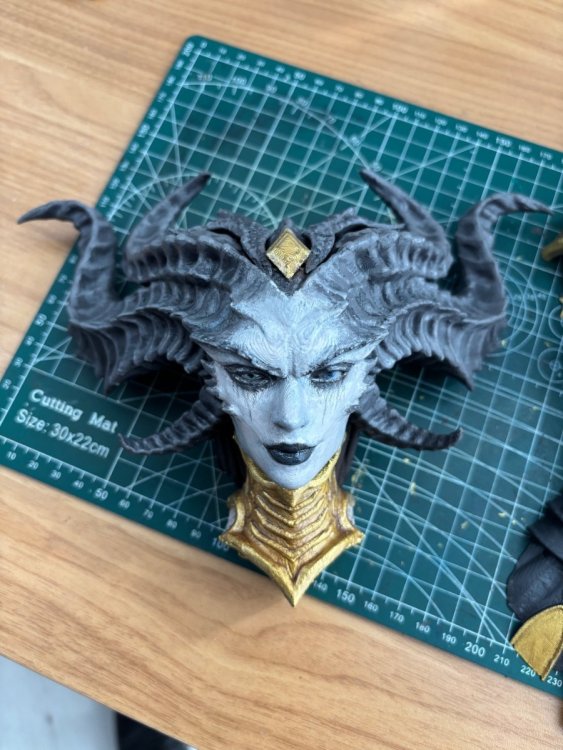-
Posts
177 -
Joined
-
Last visited
-
Days Won
7
Macsusc last won the day on December 1
Macsusc had the most liked content!
Recent Profile Visitors
The recent visitors block is disabled and is not being shown to other users.
Macsusc's Achievements
-
Congratulations Razboss!! I love to see someone who really participates in our community get a big reward! This one made me really happy and actually it was just as much of a Birthday present for me as it was a Christmas present for Razboss 🙂 Now as all our winners, the Loyalty Points do get halved so everyone else can have a shot at getting to the top and winning! Here's the highlight! https://www.twitch.tv/videos/2650279641 We will do our next big reward in 28 days. Thanks to everyone who tuned in today!
-

Kris Kringle - Black Box - For Family & Friends
Macsusc commented on Macsusc's raffle in Public Raffle
-
HoneyBadger#1772 started following Macsusc
-

Illusionator PC crashing/powering off while gaming
Macsusc replied to DaWalrus's topic in Computers's Build & Technical Help
Have you tried re-seating the GPU & it's power cable? -

Illusionator PC crashing/powering off while gaming
Macsusc replied to DaWalrus's topic in Computers's Build & Technical Help
Can you try setting the fan speed to 100%? -

Illusionator PC crashing/powering off while gaming
Macsusc replied to DaWalrus's topic in Computers's Build & Technical Help
Hey, sorry to hear about that, Could you try the below? Open AMD Software: Right-click your desktop and select "AMD Software: Adrenalin Edition" or find it in your Start Menu. Go to Tuning: Click the Performance tab, then select Tuning. Enable Manual Tuning: Find the Tuning Control section and set it to Manual, as shown in this YouTube video. Enable Fan Tuning: Turn on the Fan Tuning slider, then click Advanced Control to see the graph. Let me know the results of this. I also notified the builder of this pc to come and help you out! -
Macsusc started following flowstate.V
-
Macsusc started following HoneyBadger#1772
-
Macsusc started following Veronika67
-
Item Seeds Relics Bettina Blueprint 50 25 Green Light Stick Blueprint 50 25 Rusted Gear 100 50 Sentinel Firing Core 100 50 Leaper Pulse Unit 40 20 Humidifier 40 20 Light Gun Parts Blueprint 200 100 Heavy Gun Parts Blueprint 200 100 Vertical Grip III Blueprint 200 100 Shotgun Choke II Blueprint 200 100 Silencer I Blueprint 250 125 Compensator II Blueprint 250 125 Tempest I Blueprint 1850 925 Vulcano Blueprint 1850 925 Looting MK.3 (Survivor) Blueprint 2400 1200
-

Tesla Kill Switch: The Complete Guide For 2025
Macsusc posted a blog entry in Electric Cars's Articles
What People Mean When They Say Tesla Kill Switch The term Tesla kill switch is not official terminology from Tesla. It usually refers to three different ideas that get mixed together online: A remote command that disables the car A fleet or rental operator feature that prevents the car from being started Emergency procedures that shut down high voltage systems after a crash Because Tesla vehicles are always connected and heavily software controlled, people often assume there is a master button that can instantly shut down any Tesla. The real situation is more nuanced. Remote Control Features Already Built Into Every Tesla Teslas are connected to the owner’s smartphone app and to Tesla’s servers. This connection enables genuine remote capabilities that make the idea of a kill switch believable. Standard remote abilities include: Locking and unlocking the car Remotely starting climate control Checking battery status and charging progress Moving the car short distances with advanced parking features Enabling or disabling certain features through software updates Because over the air updates can modify how the vehicle behaves, Tesla retains significant technical control over the operating system running inside the vehicle. This proves that a remotely enforced immobilization system is technically possible. Is There A Hidden Tesla Kill Switch? The major question people ask is: Can Tesla remotely shut down any vehicle at any time? Public statements vs technical possibility Tesla has stated that it does not remotely disable customer vehicles in normal circumstances. However, from a technical perspective: Tesla controls the firmware Tesla controls account authentication Tesla controls digital keys Tesla controls update distribution This means Tesla could implement a remote kill switch entirely through software if it chose to, even though it does not publicly advertise such a feature for consumer use. Fleet, Rental And Subscription Kill Switch Systems Many mentions of a Tesla kill switch come from third party fleet operators, not Tesla itself. Fleet platforms often integrate with Tesla’s APIs and provide tools such as: Remotely revoking digital keys Disabling the ability to start the vehicle for renters who fail verification Locking the car until a contract or payment is complete In these scenarios, the kill switch is controlled by the fleet or rental company, using Tesla’s existing digital infrastructure. Emergency High Voltage Shutdown Systems There is one genuine kill switch inside every Tesla, but it is not remote and not for theft prevention. Emergency shutdown systems include: A first responder loop that can be cut to disable high voltage circuits Procedures that disconnect the low voltage battery Safety methods that prevent energy flow after severe collisions These are standard in electric vehicles and are designed to protect firefighters, paramedics and tow operators. They are not meant to remotely stop a moving car. Privacy, Data And The Surveillance Debate The Tesla kill switch discussion is tied to a much bigger conversation about privacy. Why this matters: Teslas record video when parked Teslas store location and driving telemetry Sentry Mode captures footage of activity around the vehicle Law enforcement can request or seize data when legally permitted Even without a remote immobilization system, Tesla vehicles are highly visible, heavily recorded and deeply integrated with cloud data. Viral Videos And Kill Switch Myths Online discussions commonly repeat dramatic claims such as: Tesla shutting down vehicles for misbehavior Cybertrucks being remotely deactivated during use Government mandated kill switches secretly installed These claims generally stem from viral videos, speculation or misunderstandings. There is no confirmed evidence of Tesla remotely disabling ordinary customers’ cars while they are in motion. How Tesla Owners Can Protect Their Own Cars Despite the myths, Tesla owners do have powerful control tools to prevent misuse. Recommended settings: PIN to Drive Prevents the car from being driven unless a four digit PIN is entered. Manage mobile app access Remove old devices and revoke digital keys when needed. Control data sharing Adjust settings for telemetry, cameras, and Sentry Mode storage. Disable remote access If extreme privacy is required, the owner can turn off remote access entirely, which blocks app commands. The Future Of Kill Switches And Regulation As vehicles become more connected, governments worldwide are exploring topics such as: Remote immobilization standards for stolen vehicles Safety rules for remotely operated parking functions Regulatory oversight of cloud connected driving systems Data privacy laws for automotive telemetry This ensures the debate around kill switches, autonomy and remote control will only intensify. Quick FAQ About The Tesla Kill Switch Can Tesla shut off my car while I am driving? There is no confirmed evidence of Tesla remotely stopping moving customer vehicles. Technically possible, but not documented as a real world practice. Can a rental company disable the Tesla I am driving? Yes. If you are using a rental or fleet Tesla, the operator may be able to revoke your digital key or prevent the car from being started. Does a physical kill switch exist? Yes, but only as an emergency high voltage shutdown system meant for first responders after accidents. Can I protect my Tesla from remote access? Enable PIN to Drive, secure your account, limit app access and adjust data sharing settings. -
Type: Raffle
Raffle will expire in 7 days and 2 hours
- 1 Prize
- 16 Participants
We will put a good start to someone's New Year. The box could have something like a.... hmm, a Rolex? Is that a hint? Or it could have a dry fish, or even my dirty underwear. Maybe it's empty, but even in this scenario, it's a nice box, easily worth the $1 so you can put a different gift into it and give it to someone. The box itself is worth $154 AUD, it's huge, so logic says we'll make sure it's worth the hassle of shipping this giant thing. We've given away over $150,000 USD worth of rewards in our Club, so you be the decision maker on entering this for $1 in terms of thinking what we might put into it. -
Queensland has one of the most straightforward regulatory systems in Australia when it comes to trade promotions, giveaway clubs, raffles, and lotteries. If you want to run a giveaway, a trade promotion lottery, or a membership-based prize club, Queensland provides a clear pathway as long as your promotion is structured correctly and follows the Charitable and Non-Profit Gaming framework. This guide explains everything you need to know to legally operate a giveaway or trade promotion in Queensland, fully optimised for SEO to rank for all major giveaway-related searches. Queensland at a Glance Trade promotions for businesses do not require a licence in Queensland if they follow the rules for free-entry promotional games. Queensland classifies business giveaways as Category 4 promotional games, which means no licence is required when the promotion is free-to-enter and used to promote goods or services. Entry must always be free, although entry may be attached to buying goods or services at their usual retail price. Raffles and fundraising lotteries are separate and only permitted for eligible charities and not-for-profit organisations. Raffles have their own categories (Category 1 to Category 3), each with different rules depending on proceeds and prize value. Giveaway clubs and membership models are allowed if structured as genuine free-entry trade promotions. Trade Promotions and Giveaway Clubs in Queensland A trade promotion in Queensland is a free-entry, chance-based promotion run by a business to market its goods, services, memberships, or brand. Trade promotions fall under the Category 4 promotional game classification. Key rules: Entry must be free. You may link entry to purchases, subscriptions, or membership signups, but the customer cannot be charged for the entry itself. Purchasing goods or services at normal retail price is allowed as a method of earning entries. Winners must be selected by chance, such as via a draw or random selection. The promotion must not charge for entry through SMS, phone lines, or premium access. You must state all rules clearly before the promotion begins. This is the most flexible environment in Australia for giveaway clubs and recurring prize communities. Membership-Based Giveaway Clubs in Queensland Queensland allows membership giveaway clubs when structured as a Category 4 promotional game. To comply: The membership must provide stand-alone value unrelated to entry. Entries must be free bonuses, not the product being sold. Pricing must not increase based on the number of entries provided. You must not “sell entries” or create a system where a purchase acts as a disguised ticket sale. All winners must be selected by a fair random draw. Terms must clearly state how many entries each member receives and how draws work. This makes Queensland one of the easiest states for ongoing prize clubs and subscription-based giveaway ecosystems. Raffles and Fundraising Lotteries in Queensland Raffles and fundraising lotteries are different from trade promotions. Only eligible not-for-profit and charitable organisations may run raffles. Queensland classifies raffles into three categories: Category 1 Raffles Small raffles with low proceeds. No licence required. Suitable for small clubs and local fundraisers. Category 2 Raffles Medium-scale raffles with moderate proceeds. Still no licence required, but the organisation must follow strict rules around ticketing, prize distribution, and financial responsibility. Category 3 Raffles Raffles where gross proceeds exceed $50,000. A licence is required. Full record keeping, ticketing rules, financial audits, and stricter draw rules apply. Businesses cannot run raffles Commercial giveaway clubs must structure promotions as trade promotions, not raffles. Advertising and Terms Requirements in Queensland Your promotion must include clear, transparent rules available before entry opens. Your Terms and Conditions should include: Eligibility requirements Start and end dates Entry method Number of entries allowed All prize details Draw date, time, and method How winners are notified Any unclaimed prize procedures Privacy and data use statements Advertising must not: Be misleading Hide important conditions Suggest illegitimate financial benefits Misrepresent prize values Encourage irresponsible or unsafe behaviour Advertising must reflect your Terms accurately and give entrants a fair understanding of how the promotion works. Draw Rules and Winner Management Queensland requires all prize draws for trade promotions to be fair and transparent. Requirements include: Winners must be chosen randomly. The draw must occur on the date specified in the Terms. If the winner cannot be contacted, the unclaimed prize procedure in your Terms must be followed. Prizes must be delivered as described, and within a reasonable time. Ensuring transparency protects both entrants and your brand. Record Keeping Although trade promotions do not require a licence, keeping clear records is recommended, especially for recurring giveaway clubs. Suggested records to store: Entry lists Draw randomisation proof Winner notifications Prize delivery proof Terms and Conditions Advertising materials These records protect you in the event of a compliance dispute. Prohibited Practices in Queensland To stay compliant, you must not: Charge a fee for entering Sell entries Promote gambling products illegally Offer prizes that are illegal or unsafe Conduct misleading or deceptive advertising Manipulate draw outcomes Encourage minors to participate in adult-restricted promotions Giveaway clubs must remain promotional tools, not disguised lotteries. Queensland Compliance Checklist Use this checklist before launching any promotion in Queensland: Define whether your promotion is a trade promotion or a raffle Confirm your prize pool and promotion structure Ensure entry is free and not tied to inflated pricing Draft Terms and Conditions Publish clear advertising Set up a fair and random draw Notify winners promptly Record how entries were obtained and chosen Deliver prizes correctly and on time Store all documentation for accountability Queensland Giveaway and Trade Promotion FAQ Do I need a licence for a trade promotion in Queensland? No. Trade promotions fall under Category 4 promotional games and do not require a licence. Can I charge an entry fee? No. Entry must be free. Can a business run a raffle in Queensland? No. Only charities and not-for-profit organisations may run raffles. Can my giveaway club operate on monthly subscriptions? Yes, provided the subscription has stand-alone value and entries are free bonuses. Do I need to publish winners? You must notify winners and follow the disclosure promises made in your Terms. Does Queensland allow recurring giveaways? Yes, as long as each giveaway follows the rules for free-entry promotional games.
-
South Australia has one of the most detailed and strictly regulated gambling and promotional frameworks in Australia. If you want to run a giveaway club, trade promotion, raffle, or lottery in South Australia, you must structure your promotion carefully to stay compliant with the state’s Lotteries Act and Lotteries Regulations. This guide explains exactly how to operate legally in South Australia and is fully optimised for SEO to help you rank for every key search term related to giveaways, trade promotions, raffles, and prize competitions. South Australia at a Glance A Major Trade Promotion Licence is required when the total prize value exceeds 5,000 dollars for SA entrants. Minor Trade Promotions (5,000 dollars or less) do not require a licence. Instant Prize Promotions using scratch or break-open tickets always require a licence, regardless of prize value. Entry must always be free, although entry can be attached to buying goods or services at their normal price. Promotions cannot run longer than 12 months. Certain prizes such as weapons, tobacco, and cosmetic surgery are prohibited. Raffles and fundraising lotteries have their own minimum return percentages and requirements. Penalties for running an unlawful lottery are severe, including fines and possible criminal liability. Trade Promotion Lotteries in South Australia A trade promotion lottery is a chance-based promotion designed to promote the sale of goods or services. If winners are determined randomly, you are running a lottery even if you call it a giveaway. Key rules: Entry must be free. You may require a purchase, but only at the normal retail price. You may not charge an entry fee or inflate pricing to disguise paid entry. Promotions may not exceed 12 months in duration. Winners must be selected by a fair random method such as a draw or digital randomiser. People running the promotion or with direct control of the benefiting business cannot enter. Major vs Minor Trade Promotions Minor Trade Promotions (No Licence Required) A trade promotion is considered “minor” when: The total prize value is 5,000 dollars or less, and It is not an instant win scratch-style promotion. You do not need a licence for minor trade promotions. Major Trade Promotions (Licence Required) A licence is required when: The total prize value is more than 5,000 dollars, or You want to operate an instant-win draw using scratch or break-open materials. Licences must be approved before any advertising or entry period begins. Licence processing timelines Standard processing may take around 10 business days. Faster approval may require premium fee processing. Instant Prize Trade Promotions If your giveaway uses: Scratch cards Peel-to-reveal Break-open tickets Hidden symbols Mystery instant win packaging then you must obtain an Instant Prize Trade Promotion Licence, even if the prize pool is small. Instant win promotions also require all tickets to be securely controlled, trackable, and distributed according to strict rules. Prohibited Prizes in South Australia Your promotion cannot offer: Firearms, ammunition, or dangerous weapons Tobacco or vaping products Cosmetic surgery or invasive beauty procedures Illegal or restricted goods Other products prohibited under South Australian law Ensure every prize you offer is lawful to supply, lawful to transfer, and safe for the general public. Advertising, Disclosures, and Terms Your advertising must be clear, fair, and transparent. You must clearly display: How to enter Eligibility requirements Opening and closing dates The date, time, and location of the draw The total prize value Where entrants can find the full Terms and Conditions The licence number (for major or instant prize promotions) Advertising must not: Suggest that winning is guaranteed Imply financial or lifestyle improvement Encourage harmful or irresponsible behaviour Overstate the chances of winning Link the promotion to heavy alcohol consumption Exploit vulnerable groups Draw Rules and Winner Notification In South Australia, all trade promotions must: Conduct the draw on the exact date, time, and place listed in the rules Use a fair and unbiased selection method Allow entrants to attend the draw if they choose Notify winners in writing within seven days Publish winners for prizes over 250 dollars, using initials and suburb Provide clear and reasonable instructions for prize collection Scrutineer requirement If the prize pool exceeds 30,000 dollars, an independent scrutineer must oversee the draw. Record Keeping You must keep: Entry forms or ticket butts Digital entry logs Draw records Winner notifications Prize fulfilment documentation Records must be kept for three months for trade promotions. For fundraising lotteries, additional financial records and audits may be required. Penalties for Non-Compliance South Australia imposes serious penalties for: Running an unlicensed major or instant prize promotion Failing to follow the rules of a licensed promotion Misleading advertising Failing to distribute prizes correctly Dishonest conduct in a lottery Offering prohibited prizes Both businesses and individual officers (directors, managers) can be held personally liable. Giveaway Clubs and Membership-Based Promotions Many businesses now run giveaway clubs where customers receive entries as part of a subscription or membership. In South Australia, a giveaway club must follow trade promotion rules: Entries must be a bonus, not the product being sold. Membership must offer clear independent value. You may not sell entries or increase membership pricing to indirectly sell entries. If the prize pool available to SA residents exceeds 5,000 dollars, a Major Trade Promotion Licence is required. Instant win components require a licence regardless of prize value. Failure to structure a membership giveaway correctly is considered operating an unlawful lottery. Fundraising Raffles and Charity Lotteries Raffles and charity lotteries operate under a different set of rules. Minor Raffles (No Licence) A raffle is considered “minor” when the total prize value is 5,000 dollars or less. Major Raffles (Licence Required) A licence is required when: The prize pool is more than 5,000 dollars, or The raffle format triggers additional regulatory conditions. Minimum returns Minor raffles must return a minimum percentage of proceeds to the approved purpose. Major raffles must return a higher minimum percentage of proceeds. Ticket printing, seller rules, banking, and auditing requirements apply. Raffles cannot be used for for-profit commercial purposes. They are strictly for charitable and community groups. South Australia Compliance Checklist Use this before launching any promotion or giveaway: Define whether your promotion is chance or skill based Calculate the prize pool for SA entrants Determine whether you need a licence Draft Terms and Conditions covering all legal requirements Plan your advertising and include necessary disclosures Prepare a fair draw process and scrutineer (if required) Keep proper records Deliver prizes correctly and on time Store documentation for three months or more Confirm your membership or giveaway club model complies with trade promotion rules South Australia FAQ for Giveaways and Trade Promotions When do I need a trade promotion licence? When the total prize value for SA residents exceeds 5,000 dollars, or if you run any form of instant win promotion. Can I charge an entry fee? No. Entry must be free. You may require the purchase of goods at normal retail price. How long can a promotion run? No longer than 12 months. Are instant win promotions allowed? Yes, but they always require a licence. Can my business run a raffle? No. Raffles are for charitable or community organisations. Businesses must use trade promotion rules. Do giveaway clubs need a licence? Yes, if they run chance-based promotions with prize pools over 5,000 dollars or include instant win components.
-
New South Wales regulates giveaways and prize promotions under a clear legal framework designed to protect consumers and ensure promotional transparency. Trade promotion lotteries, raffles, and giveaway clubs can operate successfully in NSW as long as they follow the rules set out in the Community Gaming laws. This guide explains exactly how to run a compliant trade promotion, trade lottery, raffle, or giveaway club in NSW so your business can grow safely and confidently in 2025. NSW at a glance A Trade Promotion Authority is needed when the total prize value for a single promotion exceeds 10,000 dollars. Authorities may last 1, 3, or 5 years, and you can run multiple promotions under one authority. When an authority is required, you must submit your promotion rules at least 10 working days before the promotion begins. Entry must always be free. You may link entry to a purchase at normal retail price, but you cannot charge a separate entry fee. Some prizes are prohibited, including weapons, tobacco, vaping products, cosmetic surgery, and large quantities of alcohol. Promotional raffles can only be run at licensed club venues, must be for members and guests, have a maximum prize value of 5,000 dollars, and require that at least 90% of gross proceeds fund prizes. Charity art unions require an authority when the prize pool exceeds 30,000 dollars and must return at least 30% of gross proceeds to the benefiting non-profit. What counts as a trade promotion in NSW A trade promotion lottery is a game of chance used to promote goods or services. Anyone may participate unless your rules specify exclusions. Staff running the promotion and individuals managing the benefiting business are not allowed to enter. Key rules: Entry fees are not permitted. Purchasing at ordinary retail value may trigger entry. Children may enter unless the rules set a minimum age. The purpose must be commercial promotion, not fundraising. Giveaway clubs and membership-based promotions Giveaway clubs may operate as trade promotions if: Entries are provided as a bonus, not sold. Memberships or products offer real value on their own, independent of entry. The prize pool structure follows NSW trade promotion rules. The authority threshold is observed. All advertising and rule requirements are met. This structure is commonly used for subscription-based giveaway ecosystems, provided membership is not simply a disguised entry fee. When you need a Trade Promotion Authority You must hold a Trade Promotion Authority when: The total prize value of a promotion exceeds 10,000 dollars. One authority can cover multiple promotions during its validity period. Mandatory 10-day notification rule If your promotion requires an authority, you must: Submit your gaming rules for review at least 10 working days before the promotion begins. Wait for confirmation before advertising or accepting entries. This timeline must be factored into your promotional schedule. Interstate and online operators If NSW residents can enter your promotion, you must comply with NSW rules regardless of where your business is located. Rules, advertising, and disclosures Your Terms and Conditions must be clear, complete, and easily accessible. If your advertisement cannot fit the full rules, you must clearly state where they can be found. Advertising must not: Show children participating in the gaming activity. Suggest winning is guaranteed. Claim that participation will improve financial circumstances. Encourage illegal or irresponsible behaviour. If a Trade Promotion Authority is required, the authority number must appear on all promotional advertising. Prize rules and prohibited prizes There is no maximum prize limit for trade promotions, but NSW prohibits certain items. You cannot offer: Firearms, ammunition, or imitation weapons Tobacco, smoking, or vaping products Cosmetic surgery or similar procedures Liquor exceeding specific volume limits Any item prohibited under other NSW or Commonwealth laws Unclaimed prizes Your rules must state what happens to unclaimed prizes. If no timeframe is included, you must hold the prize for at least 3 months before conducting a redraw. Perishable items such as food platters require special handling. Record keeping and financial rules Although detailed record keeping is not compulsory for every trade promotion, it is strongly recommended for transparency. If money is collected in connection with a gaming activity: Proceeds must be deposited within 2 business days. If annual gross proceeds exceed 250,000 dollars, the accounts may require auditing. Promotional raffles at licensed NSW clubs A promotional raffle is a special raffle conducted: Only at a venue with a club licence Only for members and guests For the purpose of attracting or entertaining patrons Rules include: Maximum total prize value 5,000 dollars At least 90% of gross proceeds must fund prizes No authority is required Standard advertising and prohibited-prize rules still apply Promotional raffles are not trade promotions and cannot be used for general commercial giveaways. Charity art unions Art unions are large charity lotteries with total prize values that exceed 30,000 dollars. They require an authority and must meet charity-specific rules: A minimum of 30% of gross proceeds must go to the beneficiary. Strict ticketing, disclosure, and record keeping rules apply. Funds must be handled through appropriate charity processes. Free lotteries and lucky door promotions Free entry games such as: Lucky door prizes Lucky seat draws Volunteer-only free lotteries can be legally run if: No money changes hands Prize values fall within the lawful limits The activity complies with the free-lottery conditions in the Regulations These promotions must never be misrepresented as trade promotions. NSW trade promotion compliance checklist Use this before launching any giveaway or promotion: Calculate the prize pool. If it exceeds 10,000 dollars, apply for an authority. Draft full Terms and Conditions. Include eligibility, entry method, start and end dates, draw mechanics, prize details, winner contact method, publication requirements, and unclaimed prize procedures. Submit rules and notify at least 10 working days in advance if an authority is required. Design compliant advertising. Display the authority number if applicable and avoid misleading claims. Run a transparent draw. Use a fair random method and document the process. Contact winners promptly and hold unclaimed prizes for the required time period. Maintain sensible records, especially if funds are collected or if your organisation crosses audit thresholds. NSW FAQ for giveaways, raffles, and trade promotions Do I need a permit for every giveaway in NSW? No. You only need a Trade Promotion Authority when the prize pool exceeds 10,000 dollars. Can I charge an entry fee? No. Entry fees are prohibited. Purchases at normal retail value are allowed. Do I need to submit my rules? Yes, when an authority is required. You must notify and submit rules 10 working days before the promotion starts. Do NSW rules apply if I run a giveaway from another state or country? Yes. If NSW residents can enter, you must comply with NSW rules. Are there banned prizes? Yes. Weapons, tobacco, vaping products, cosmetic surgery, and large alcohol volumes are prohibited. How are promotional raffles different? They are ticketed raffles run only at licensed clubs, must be for members and guests, have a 5,000 dollar prize limit, and 90% of proceeds must fund prizes. What about charity mega draws? These are art unions. An authority is required when the prize pool is over 30,000 dollars, and 30% of proceeds must benefit the charity.
-
We'll organise a proper app for this soon, for now people can drop their socials here and we'll follow / share all their content.














